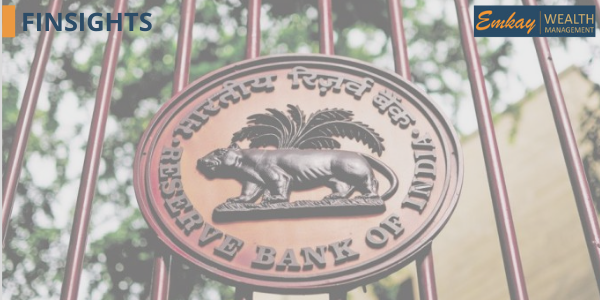Pre-Policy Assessment: The pre-policy assessment which we had published is as follows: “In the last two policy announcements RBI maintained a studied pause while making it amply clear that based on data if required the RBI would go in for rate hikes. In fact, it seems like RBI has more or less arrived at a near-optimum growth-inflation trade-off at least for time being. However, the challenges remain mainly from price stability angle. The surge in the prices of tomatoes, of fruits and vegetables etc. has been a matter of concern and they do not seem to be coming down too soon. Fuel prices also remain a concern as Brent has moved up in international markets. All this will be further compounded by a weaker Rupee as the currency is trading closer to Rs.83 against the US Dollar. The threat of inflation edging higher is an eventuality that cannot be easily ignored. Even going by the projections on inflation expectations given by the RBI, the inflation level is assessed to remain quite elevated though closer to the upper band of the target range. The general expectation is that RBI will continue with the pause, and the current inflationary pressures may be viewed transient. The market yields have moved higher in response to the higher yields in the US treasury notes and bonds. The RBI may not have issues with the market adjusting itself to changing realities in the marketplace. The liquidity conditions remain good with the inter-bank liquidity in the range of Rs.1.50 lakh Crs to Rs.2 Lakh Crs. Given all the factors at play, it is most likely that we may be in for a longer than expected pause.”
The Policy: RBI has kept the Repo Rate unchanged at 6.50 %. The MPC has stated very emphatically that the RBI remains committed to withdrawal of accommodation. RBI believes that the positive effects of the earlier policy actions, that is, rate hikes is gradually getting transmitted. In short, the policy will continue to be a hawkish pause for the rest of the year. Potential inflationary pressures have been already taken into consideration by the MPC. The inflation projection for 2023-24, is revised to 5.40%, per cent – Q2 at 6.20%, Q3 at 5.70%, and Q4 at 5.20%. The inflation projection for Q2 is higher mainly due to the likely price shock from vegetable prices. The liquidity conditions remain in surplus in the interbank market with the Systemic liquidity at Rs.1.92Lakh Crs as of Aug 8, 2023, and Rs.1.14 Lakh Crs in the Standing deposit Facility. This reflects a high level of liquidity at this juncture compared to the position three months back. RBI has indicated that the surplus build up may be due to the withdrawal of Rs.2000 notes from the system which naturally saddles the banking system with short term liquidity, the surplus transfer from the RBI to the government which is spent by the government over a period of time, and also the healthy inflows from overseas investors.
The Incremental CRR: RBI has imposed an incremental CRR of 10 %, on incremental Net Demand and Time Liabilities for the period May19,2023 to July 28,2023. This simply refers to the net deposit mobilization during this period. The withdrawal of Rs.2000 notes from the system resulted in the banks saddled with liquidity. Deposit growth has also been in the range of 9% to 10 %. RBI’s objective of imposing the incremental CRR is to withdraw the excess liquidity from the system for a temporary period. It has also been clarified that by September 8,2023, or earlier, the incremental CRR will be reviewed for release of liquidity into the system before the festival season arrives. The current CRR and the incremental CRR of 10 % enhances the effective cost of funds for the banks. But this measure is only a temporary one and therefore, this may not have any durable impact as such.
The Perspective: The policy underlines a stance that is a hawkish pause, and this will continue for a loner period that expected. Any rate reduction may happen only after another two quarters or more. Any rate action will depend singularly on the inflation numbers and the trajectory of the currency. Short term rates may move up in response to the incremental CRR, but it may not have a lasting impact. The long end will move based on the supply that is coming from the primary auctions, and the liquidity support for the same. The broad range for the GOI 10 Yr Benchmark will be 7.05 % to 7.25 %. The policy is neutral to equities, though sympathetic movements in local equites in alignment with the US markets will dominate the markets in the coming months.

